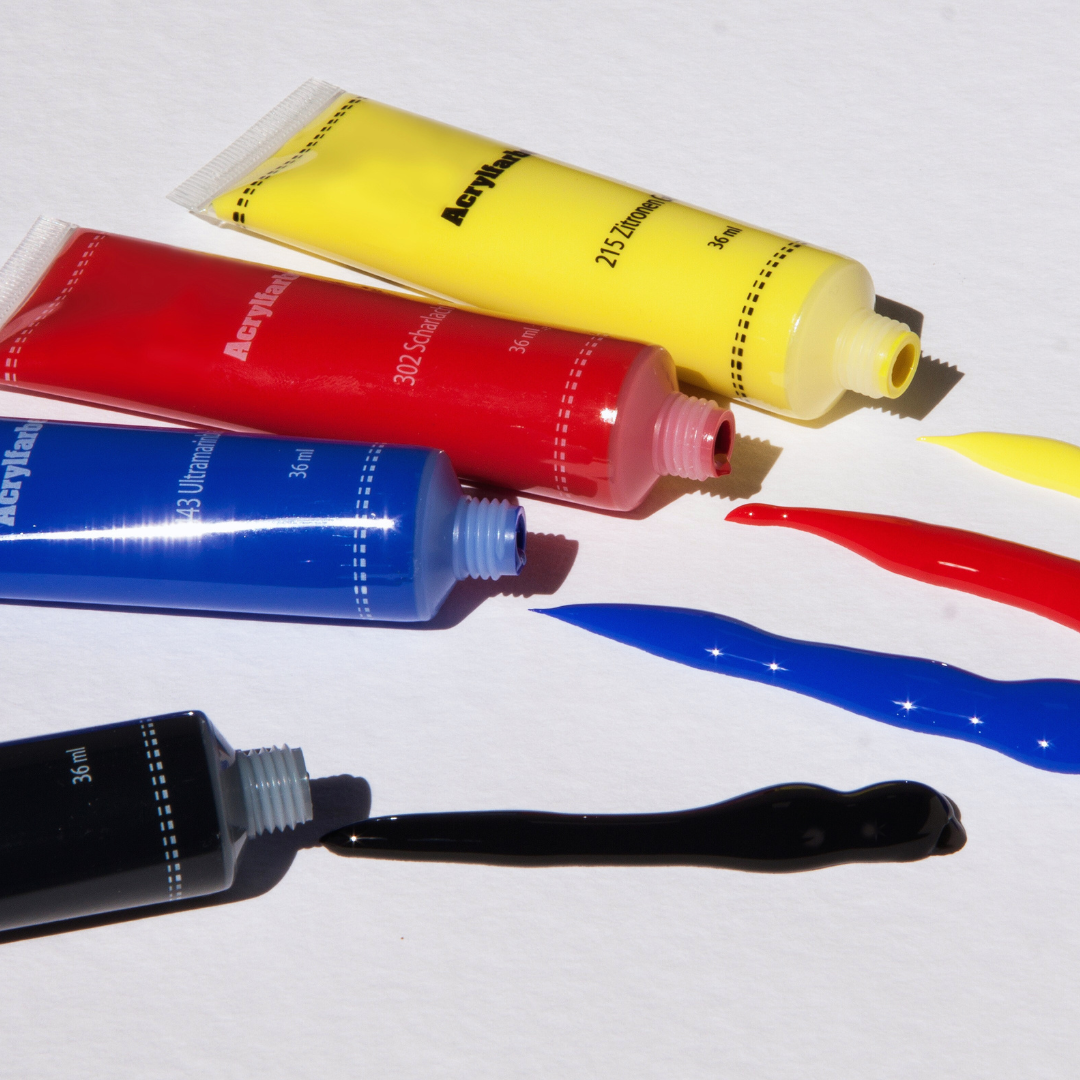Choosing the right paint for art can significantly impact the quality and outcome of creative projects. Artists often grapple with various options, from watercolours to acrylics and oils. For most artists, acrylic paint stands out as the best choice due to its versatility, vibrant colours, and quick drying time.
Understanding the distinct characteristics of each type of paint is essential. Watercolours offer a transparent quality ideal for delicate washes, while oil paints provide a rich texture that allows for blending over extended periods. Acrylics, in contrast, allow for both fine details and wide washes, catering to a wide range of styles and techniques.
As artists explore their options, factors such as toxicity, drying time, and ease of use should influence their decisions. Ultimately, the best paint is the one that aligns with their personal style and project requirements, leading to creative satisfaction and successful artwork.
Characteristics of Acrylic Paint
Acrylic paint is known for its versatility and vibrant colours. Its unique properties make it suitable for a variety of applications in the art world. The following aspects highlight key characteristics that artists should consider when choosing acrylics.
Pigment and Colour Range
Acrylic paints consist of a binder and pigments, which significantly influence their quality and performance. Pure pigments provide intense hues, allowing artists to create works with excellent colour strength. The colour range available is broad, including both vibrant and muted options.
Artists can mix colours easily to achieve desirable shades and tints. Additionally, acrylics can be transparent or opaque, providing flexibility in layering techniques. This adaptability means that artists can create everything from subtle washes to bold statements.
Texture and Consistency
The texture of acrylic paint can vary significantly based on the formulation. Artists often choose between various types, such as heavy-body acrylics or those with a smoother consistency. Heavy body acrylics have a thick consistency, suitable for impasto techniques, allowing for dimensional brush strokes.
Conversely, soft-bodied acrylics offer a smoother texture, ideal for detailed work and fine lines. The viscosity of the paint can be altered with mediums, providing opportunities for various effects. Adjusting paint consistency enables artists to control how the acrylic interacts with surfaces.
Drying Time and Finish
Acrylic paint is recognised for its quick drying time, which can range from minutes to a few hours, depending on thickness and environmental conditions. This property allows artists to work rapidly and layer paints without prolonged waiting.
The finish of acrylics can vary from matte to a glossy sheen. The choice often depends on the desired aesthetic and the mediums added to the paint. Gloss finishes enhance colour vibrancy, while matte finishes can provide a more subdued appearance.
This versatility in drying times and finishes makes acrylics appealing for diverse artistic techniques.
Lightfastness and Longevity
Lightfastness refers to a paint’s ability to resist fading when exposed to light. High-quality acrylic paints typically contain lightfast pigments, ensuring longevity in artworks.
Artists should check the lightfastness ratings, as this aspect can influence the durability of the piece over time. Works created with lightfast acrylics maintain their intensity and colour for many years, making them suitable for display.
Investing in acrylics with strong lightfastness guarantees that art retains its initial vibrancy, even under challenging lighting conditions.
Comparing Acrylics with Other Mediums
Acrylic paint offers unique advantages when compared to other mediums, notably oil paint and water-based options like watercolours and gouache. Each medium has distinctive characteristics that influence the artist’s choice based on their style and project requirements.
Oil Paint versus Acrylic Paint
Oil paint is renowned for its rich texture and depth of colour. It dries slowly, allowing for extended blending time, which is ideal for techniques like glazing. Artists can achieve subtle tonal variations over extended periods.
In contrast, acrylic paint dries rapidly, providing a different set of advantages. This quick drying time permits artists to layer colours efficiently without long waits. Acrylics are also water-soluble when wet, making them easier to clean up.
| Feature | Oil Paint | Acrylic Paint |
| Drying Time | Slow | Fast |
| Cleanup | Solvent-based | Water-based |
| Blending | Excellent | Limited (drying fast) |
| Finish | Glossy, rich | Matte or glossy |
Watercolours and Gouache
Watercolours are known for their transparency and luminosity, resulting in soft, fluid effects. They require specific techniques and paper types to achieve the desired finish, contributing to their charm.
Gouache, while also water-based, is more opaque and provides a richer, more saturated colour application. It shares some characteristics with acrylics in that it can be reactivated when wet, but it offers a completely different texture.
A summary of their characteristics is presented below:
| Feature | Watercolours | Gouache |
| Opacity | Transparent | Opaque |
| Finish | Soft, delicate | Bold, matte |
| Application Techniques | Wet onto dry | Can be used dry or wet |
| Ideal Surface | Watercolour paper | Watercolour or illustration board |
Each medium presents unique qualities that cater to different artistic needs and styles.
Choosing Acrylic Paints for Artwork
When selecting acrylic paints for artwork, factors such as paint quality, intended use, and budget can significantly influence the outcome. Both professional and student-grade options exist, offering different balances of pigment quality and price. Understanding the range of brands available can aid in making an informed choice.
Professional versus Student Grades
Professional-grade acrylic paints typically contain a higher concentration of pigments, resulting in richer colours and better lightfastness. Artists often prefer these for their vibrant hues and excellent mixing capabilities.
In contrast, student-grade acrylics are designed for beginners or those on a budget. They have a lower pigment load, which can affect colour vibrancy and permanence. While suitable for practice, they may not meet the needs of a professional artist seeking the best acrylic paint on the market.
Acrylic Paint Brands and Price Range
Numerous brands offer various price points for acrylic paints. Liquitex and Winsor & Newton Professional are recognised for high-quality options, featuring both heavy body and fluid acrylics.
In the budget range, options like Daler Rowney System 3 Acrylic and Mont Marte provide decent quality without breaking the bank. Arteza and Nicpro are also popular among beginners for their affordability and satisfactory performance.
| Brand | Type | Price Range (Approx) |
| Liquitex Heavy Body | Professional | £15 – £40 |
| Winsor & Newton | Professional | £20 – £50 |
| Daler Rowney | Student | £10 – £25 |
| Mont Marte | Budget | £5 – £15 |
Specialised Acrylic Products
Specialised products, such as acrylic mediums and inks, expand the versatility of acrylic painting. Mediums can alter the texture, drying time, and sheen of the paint, allowing for techniques like impasto or glazing. Popular options include Golden Heavy Body and Sennelier Abstract for their unique formulations.
Fluid acrylics are another valuable choice, offering vibrant colours and ease of application. They are particularly favoured for pouring techniques or detailed work. Many artists appreciate the ability to combine different products to achieve desired finishes, enhancing the overall artistic expression.
Application Techniques and Best Practices
Effective application techniques significantly enhance the quality of art. Understanding mixing and layering, utilising mediums, and preparing surfaces are essential for achieving desired results.
Mixing and Layering
Mixing paint effectively allows artists to create a wide range of colours and textures. Artists can combine high-quality pigments to achieve vibrant hues or subtle tones.
Layering is crucial for depth. Thin layers of paint build up richness without impeding drying time. It is often recommended to work from light to dark, allowing each layer to dry before adding more. This technique gives artwork greater dimension and can help create more complex colour interactions.
Using a palette knife or brush can aid in achieving desired mixing capabilities while blending techniques like glazing can add translucency. It is essential to consider the type of paint being used, as acrylic and oil paints have different drying times and behaviours when layered.
Using Mediums and Additives
Mediums and additives can transform paint properties. Acrylic mediums, for example, can increase fluidity or texture, allowing for diverse artistic effects.
They are often mixed into paint to alter drying times or increase gloss levels and transparency. For those using oils, mediums such as linseed oil or turpentine can enhance flow and drying time.
Additives can also improve adhesion or create special effects. When experimenting with different mediums, it is advisable to test small amounts to gauge their impact on the desired finish.
Surface Preparation
Preparing surfaces properly impacts paint adherence and finish. Artists should choose surfaces based on the paint type—canvas, wood, or paper. Each material requires specific priming techniques.
For acrylics, a gesso primer on canvas or wood ensures a smooth application. Oil paints benefit from a different preparation, as they require an oil-based primer for better adhesion.
Properly prepared surfaces not only help in achieving vibrant colours but also extend the longevity of the artwork. Before painting, ensuring surfaces are free from dust or oils will help in achieving the best results.



